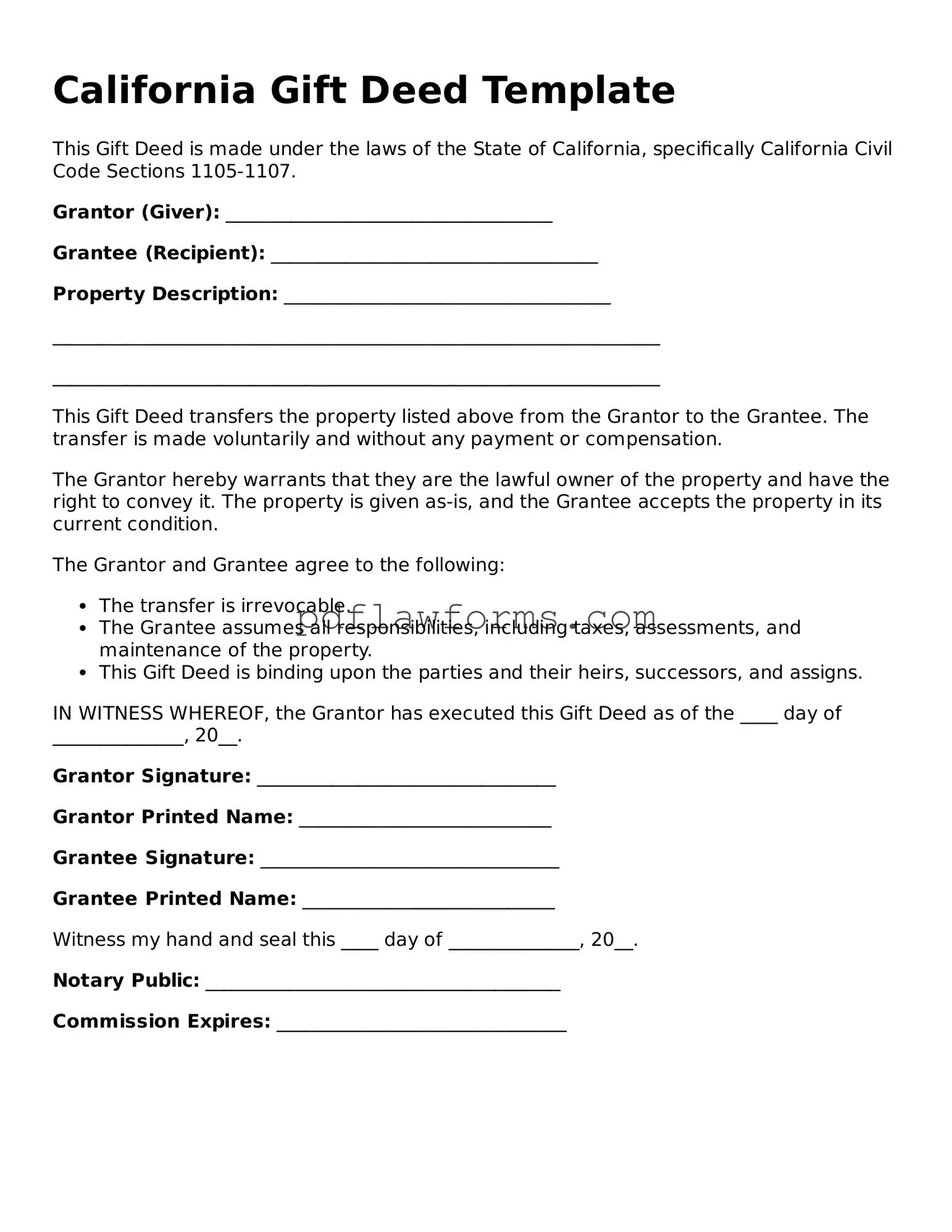Gift Deed Form for the State of California
A California Gift Deed form is a legal document used to transfer property ownership as a gift without any exchange of money. This form ensures that the transfer is documented and recognized by the state, providing clarity and security for both the giver and the recipient. If you're ready to proceed, fill out the form by clicking the button below.
Make My Document Online
